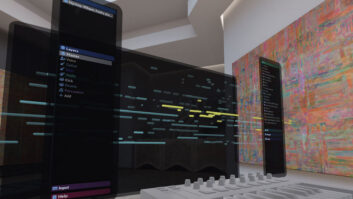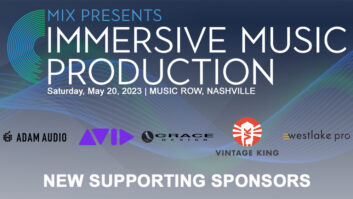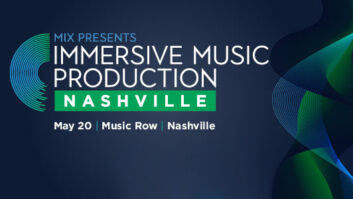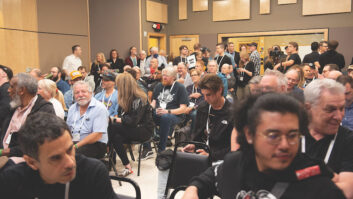Renowned producer/engineer Elliot Scheiner was brought on the project as an audio consultant and mixer for the entire ALL ACCESS project. Producer Jon Shapiro was a fan of Scheiner’s work on many classic albums over the years and learned that he was the reigning guru of surround sound. “We wanted him as a part of the Dream Team we assembled for the film, and he was equally interested in what we were doing,” Shapiro says. Scheiner mixed the tracks at John Russell and Katherine Lombard’s Presence Studios in Westport, Conn., in a room he’s come to call his 5.1 home, because he loves its sound — its accuracy — and he loves the VR Legend console. But he was also involved on location.
“You are very limited when you are on a stage with what you can do in terms of 5.1,” he says. “You can’t put up a tree around the drums necessarily. Obviously, the 5.1 field was going to come from the mix and not from the recording, except in terms of the ambience. There had to be at least 30 ambient mics around the room. It was pretty cool.
“It is contrary to the way the movie looks, but the cameras are constantly moving, so I took a lot of creative license with how I wanted to mix things,” Scheiner continues. “In Santana’s band, the horns are on the right, if you are looking at them, yet I put them in the center rear. For me, the object wasn’t to re-create how it would look onstage, but just to create a feeling you would get if you were on the stage.”
Scheiner elected to go after a “truly aggressive surround sound mix,” as opposed to what he described as a “typical movie mix, where basically all you have in the surrounds are reverbs and effects. I hard-panned things in the rear. If I had a mono piano, it might be hard left rear. A guitar track might be hard right. Sometimes horns got panned hard to the rear. This wasn’t a stereo mix with reverbs in the rear or coming out from the front and having reverbs further back. This band was totally surrounding you.
“I’ve always felt that, even in a home situation with a home surround theater listening environment, you don’t have to be perfectly on-axis to hear the music,” he continues. “With stereo, how many times do we stand outside the speaker range and hear the music perfectly fine? It is the same thing with surround. You can stand outside the theater and still hear the music perfectly well. You might not hear the placement of the panning, but you hear the music fine. Once you get into the arena, if you walk over to the left surround, it is like walking to that player, so you hear him a little better. When you are in a rehearsal and you are standing in the middle, you might walk over to a player to hear what he is playing. That is basically what this is.”
Though IMAX is a 6.0-channel format, Scheiner delivered finished 5.1 mixes, as stems, to Mark Wright at CBC Toronto for the film mix. “I went up to Canada to hear what they were doing and this guy was really great,” Scheiner says. “He remained so true to what I had done, and he kept everything where I put it. He didn’t move a thing. I’ve sat in the IMAX Theater and listened to it, and it is awesome to hear this thing in a theater.”







